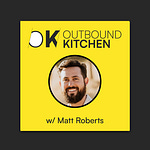Listen now on Spotify, YouTube, and Apple.
Chef's specials:
Comp plans that keep your BDRs motivated and drive business results.
Spiffs that fire them up and deliver short-term wins.
How to present this to your CRO
Discover how Anastasia Chihai, Sr. Director of Sales Development at Upland, revamped her comp plan for 2025.
In this conversation, learn how to implement a point-based system that aligns SDR performance with revenue goals. Uncover innovative spiff strategies, master the art of motivating distributed teams, and optimize your sales development structure for maximum ROI.
Whether you're a founder, GTM leader, or sales executive, this video is packed with actionable insights to transform your SDR team's performance in 2025 and beyond.
Who is Anastasia Chihai?
Sr. Director, Sales Development at Upland, and Founder, ATX SDR Leaders.
Connect with Anastasia on LinkedIn and for the coming events in Austin, Texas.
More context about the Upland sales team:
Markets: NA, and EMEA
Segment: SMB, Mid-market, and enterprise
Buyer personas: IT, Sales, Marketing, Customer Service, and Operations
Industries: BPO, contact centers, Financial Services, Healthcare, Media and Publishing, Consumer Goods, and Telecommunications
Referenced:
Some takeaways
Innovative Compensation Model
Anastasia implemented a point-based system for SDR compensation, moving away from traditional models:
SDRs earn points based on the seniority of prospects they engage (e.g., C-level = 10 points, Manager = 5 points)
Quota is set in points rather than number of meetings or opportunities
This incentivizes SDRs to target higher-level decision-makers, potentially improving deal quality and close rates
Separation of Inbound and Outbound Teams
For 2025, Anastasia is separating inbound and outbound teams completely
Only "hand-raisers" (direct inquiries) will be considered true inbound leads
Content downloads, webinar registrations, etc. will be treated as outbound leads requiring more nurturing
Rethinking Inbound Lead Handling
Inbound team will focus solely on hand-raisers
The outbound team will handle other marketing-generated leads (content downloads, etc.)
This approach aims to improve conversion rates and ensure proper lead nurturing
Creative SPIFFs and Motivation Techniques
Monthly SPIFF programs with themed challenges (e.g., Bingo card, race to the top)
Use of physical rewards like trophies and rings for top performers
Spinning wheel with lottery tickets as instant rewards for booking meetings
Balancing Short-term and Long-term Incentives
Implemented a year-long SPIFF focused on pipeline quality (opportunities progressing to stage 4)
This encourages SDRs to focus on deal quality alongside quantity
Challenges with Distributed Teams
Noted that UK team members were less responsive to SPIFF programs that worked well in North America
Suggests the need for localized or team-based incentives for distributed teams
Compensation Plan Design Process
Uses a combination of top-down (based on company goals) and bottom-up (based on historical performance) approaches
Involves multiple stakeholders including Finance and Operations to ensure viability and prevent gaming the system
In this live, we cover:
00:00 Sales Motivation with Anastasia Chihai
00:54 Revamping the Compensation Plan
03:21 Complexities of Managing Multiple Business Units
05:59 Designing a Point-Based System
06:38 Focusing on Target Accounts and Seniority
10:14 Defining Sales Qualified Leads (SQL)
13:06 Adapting Quotas for Different Segments
22:07 Gaining Approval for the New Compensation Plan
28:11 Implementing Safeguards Against System Gaming
30:37 Short-Term Incentives: Holiday Spiffs
31:46 The Impact of Short-Term Spiffs
32:19 Planning for December Spiffs
32:51 November Bingo Card Success
33:37 December Personalized Stickers
36:28 Monthly and Weekly Spiffs Strategy
40:05 Lessons from Failed Spiffs
42:49 Spinning Wheel Success
45:31 Managing Spiffs Fatigue
50:37 Inbound vs. Outbound Teams
55:03 Balancing Quotas for Inbound and Outbound












